ECS LIVA Z Fanless Dual-LAN Apollo Lake UCFF PC Review
by Ganesh T S on March 30, 2017 8:00 AM ESTPower Consumption and Thermal Performance
The power consumption at the wall was measured with a 1080p display being driven through the HDMI port. In the graphs below, we compare the idle and load power of the ECS LIVA-ZN33 with other low power PCs evaluated before. For load power consumption, we ran the AIDA64 System Stability Test with various stress components, as well as our custom stress test,and noted the maximum sustained power consumption at the wall.


The numbers were recorded for the eMMC-only configuration. Since the load power consumption peak happened in our custom stress test (which doesn't stress the SSD / storage), we didn't feel the need to repeat the custom stress test in the SSD configuration. We, however, noticed that the baseline number (eMMC configuration) shifted up by around 800mW to 1W in the scenarios where the SSD remained relatively idle.
Our thermal stress routine starts with the system at idle, followed by four stages of different system loading profiles using the AIDA64 System Stability Test (each of 30 minutes duration). In the first stage, we stress the CPU, caches and RAM. In the second stage, we add the GPU to the above list. In the third stage, we stress the GPU standalone. In the final stage, we stress all the system components (including the disks). Beyond this, we leave the unit idle in order to determine how quickly the various temperatures in the system can come back to normal idling range. The various clocks, temperatures and power consumption numbers for the system during the above routine are presented in the graphs below. The first set of three graphs correspond to the eMMC-only configuration, while the second set correspond to the SSD + eMMC configuration.
We repeated the same observations with our legacy stress test using the latest versions of Prime95 and Furmark - Prime95 v28.10 for 30 minutes (after launching with the max. stress option), followed by Furmark v1.18.20 for 30 minutes. The Prime95 load is then removed, allowing just the GPU alone to be stressed for 30 minutes. The system is then left idle.
According to the official specifications, the junction temperature of the Intel Celeron N3350 is 90C. The thermal design does manage to keep the core temperatures well below that. We see that the system is essentially limited by the 6W package TDP. Our testing shows that the thermal design can easily handle a sustained 6W power consumption by the SoC for at least 2 hours. The idling temperatures are around 40 - 45C.
Another important aspect to keep note of while evaluating fanless PCs is the chassis temperature. Using the Android version of the FLIR One thermal imager, we observed the chassis temperature after the CPU package temperature reached the maximum steady state value in the above graph.
We have additional thermal images in the gallery below. The FLIR One thermal imager app reported a maximum chassis temperature of around 53C in our measurements.
Given that the heat sink faces downwards. the positioning of the chassis and its all-plastic non-metallic nature ensure that the externally accessible parts remain at a relatively low temperature.


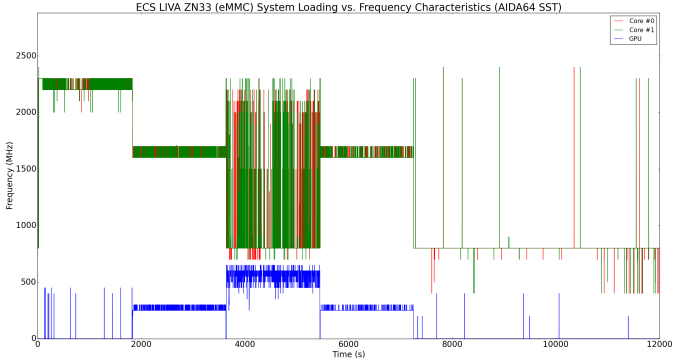
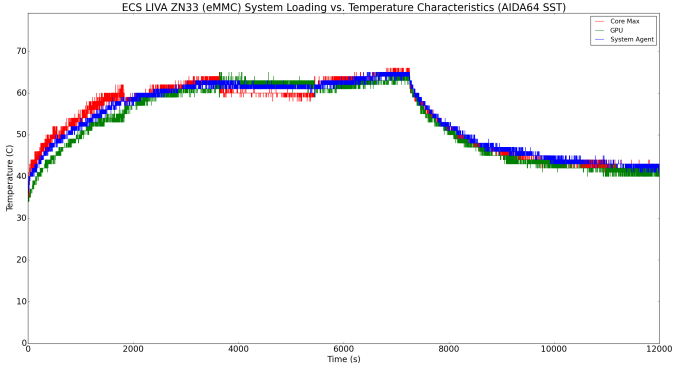

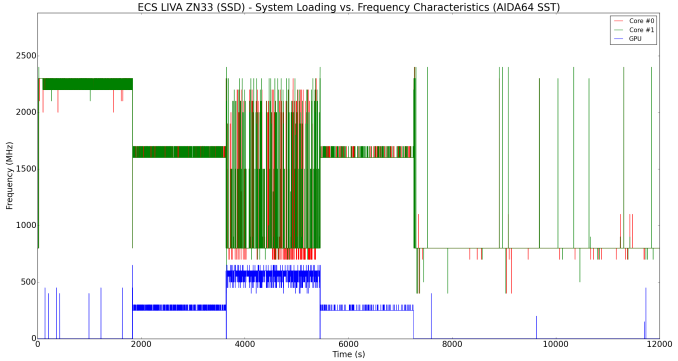
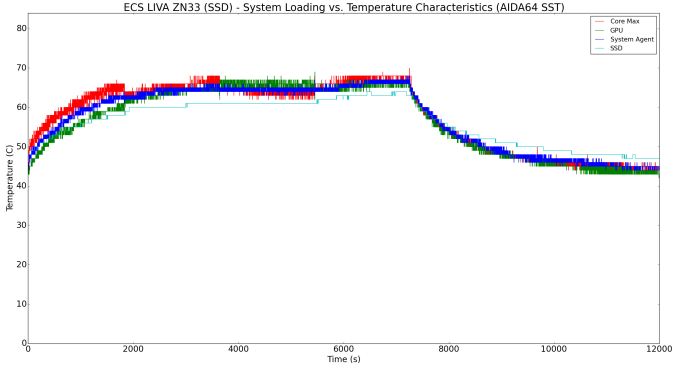
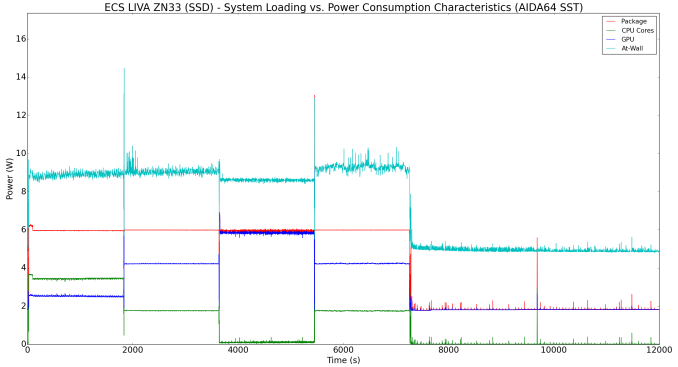
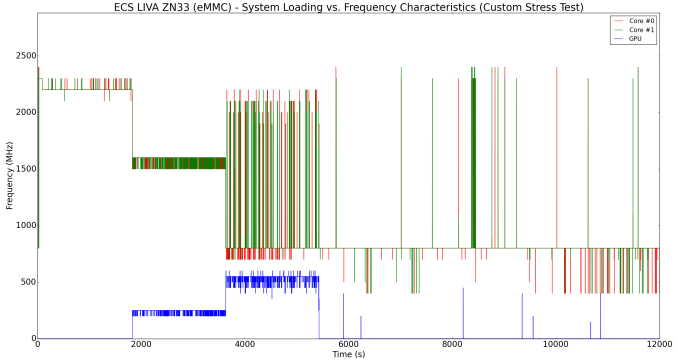
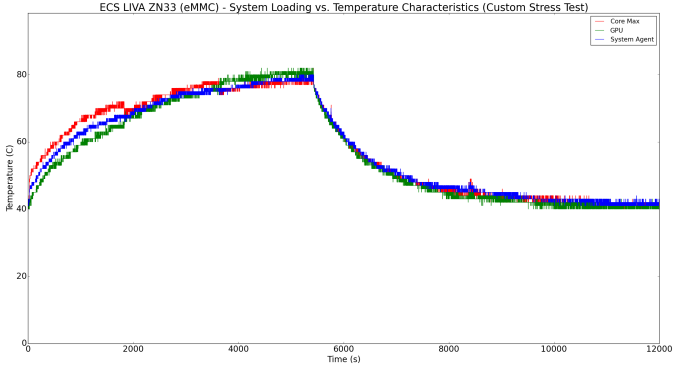
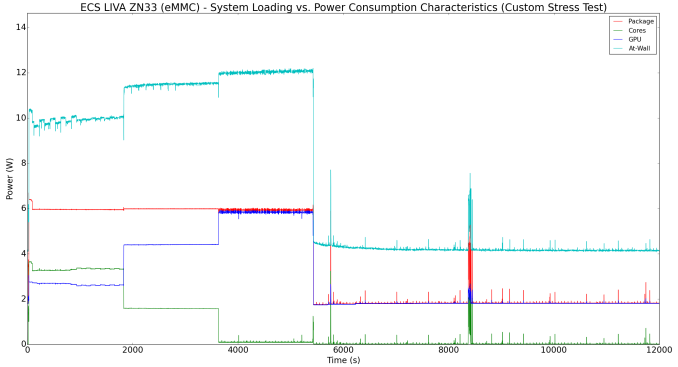
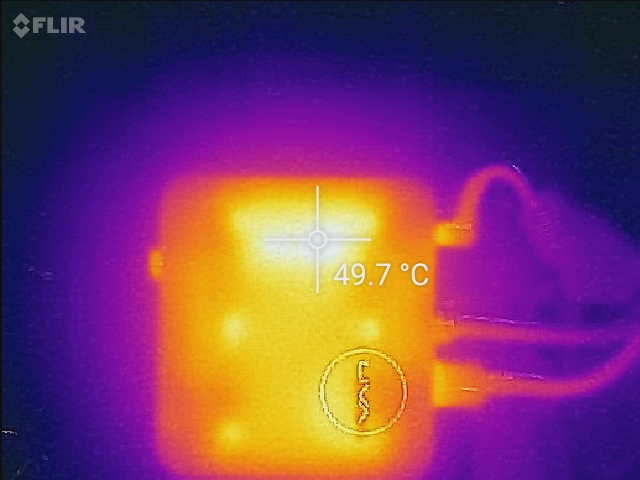














30 Comments
View All Comments
Smudgeous - Thursday, March 30, 2017 - link
I concur. This beats the Fitlet in terms of price by around 50% (especially when you factor in the extended fin heatsink/cover) and the power draw in the 3450 would still be better for comparable performance. This little guy looks like a real gem.Namisecond - Monday, April 3, 2017 - link
What you save, you lose in capability. The Fitlet models offer up to 4 additional PCIe ethernet ports, Intel i211 IIRC. The Fitlet also seems more purpose-built as a hobbyist network appliance. The Liva Z are more like thin clients where they made an error and stuck on another ethernet port. There are plenty of Bay Trail based network appliance boxes you can pick up on amazon and ebay that come in under the Liva Z's price point, many of them even offer 4 Intel ethernet ports.jaydee - Thursday, March 30, 2017 - link
Because obviously we all know you were commenting a different model than the one reviewed here, without mentioning it...nathanddrews - Friday, March 31, 2017 - link
IKR?Holliday75 - Friday, March 31, 2017 - link
Lets just start leaving random review comments in other articles and then berating people who not knowing what product we are talking about.JoeyJoJo123 - Friday, March 31, 2017 - link
>The LIVA Z comes in three variants,corresponding to the three members of the Apollo Lake mobile SoC family (6W TDP) - the Pentium N4200, or the _Celeron N3450_, or the Celeron N3350. Our review sample, the LIVA-ZN33 is based on the Intel Celeron N3350.If I were state that "it's great that this phone can be equipped with 128GB of storage" in a review about a Samsung Galaxy phone, where in particular the 64GB model was reviewed, my comment would still be
1) Relevant.
2) Obvious given that all electronics products get launched with different configurations.
Responding back that "Hey, this phone has 64GB of storage" is neither enlightening nor relevant to someone commenting that a product can be equipped with 128GB of storage if one chooses to purchase that particular SKU.
The proper way to respond back if you didn't realize that would be "Oh, gotcha!" or "Yeah, that's an interesting point!" rather than pushing the blame back to me, as if I'm somehow at any fault of you not understanding that there are different SKUs of this particular model available.
extide - Tuesday, April 11, 2017 - link
And it even supports AES-NI -- which I rely on because I make very heavy use of OpenVPN. I have been able to saturate my 300Mbit connection on a reasonably slow processor (albeit faster than this) with AES-NI -- I doubt I would even get close without it -- especially on an Atom.mckirkus - Friday, March 31, 2017 - link
Torn between this and an Asrock dual Intel LAN mini-itx build with a low power i3. The i3 will get you hardware encryption but it's probably ridiculous overkill for most.huhn - Thursday, March 30, 2017 - link
what's the point of the refresh rate test?i know intel was using the wrong math for 23p years ago but that doesn't mean a perfect 24 hz for 24p is any good.
the display refreshrate in madVR is calculated from the system clock and the GPU clock (pretty obvious that it is using the same clock generator for both) but that not important for perfect playback.
for perfect playback a GPU clock that is close to the audio clock is needed without frame drops or repeats and this look pretty bad on this system. 16 mins is not good at all.
the clock deviation is relative high and the drop/repeat every X mins is pretty low on the screen screen.
for better judgment a video should be played for 10 min+ and the audio volume should be changed at the start of playback a couple of times to see the real drop/repeat frame every X sec/mins/hours/days.
the used audio device can play a huge roll in this too.
but what so ever i don't see any gain from the reported refresh rate it a very unimportant number.
SquarePeg - Thursday, March 30, 2017 - link
Everything about the $180 model just screams "Chromebox".